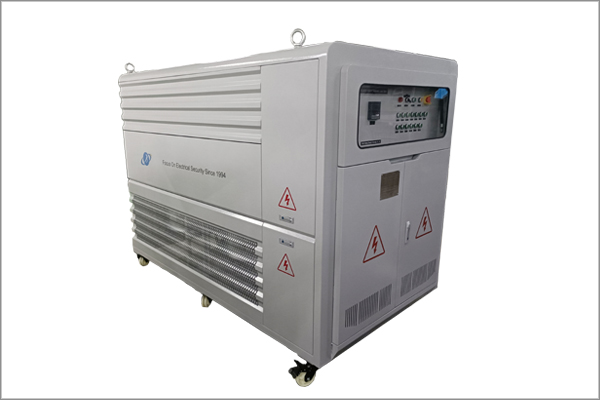Types and Applications of Generator Load Banks
Time:2024-09-03
Generator load banks are crucial equipment in the field of electrical testing, primarily used to simulate various load conditions for evaluating generator performance. These load banks not only ensure the proper functioning of generators but also provide critical data support during maintenance. This article will delve into the primary types of generator load banks and their applications.
I. Classification by Output Type and Operating Mode
Constant Current Load Bank (CCLB)
A CCLB simulates a constant current load, essential for testing the output current capability of power sources. In generator testing, it helps determine the stability and efficiency of the generator under different current conditions.
Constant Voltage Load Bank (CVLB)
A CVLB mimics a constant voltage load, suitable for assessing the output voltage capability of power sources. For generators, this load bank evaluates their stability and regulation capabilities across different voltage requirements.
Constant Power Load Bank (CPLB)
A CPLB simulates a constant power load, essential for testing the output power capability of power sources. In generator testing, a CPLB comprehensively assesses the generator's power output and efficiency under various loads.
II. Classification by Load Capacity
High-Power Load Bank
High-power load banks are designed for testing high-power power supplies or inverters, typically ranging from several kilowatts to tens of kilowatts. In generator testing, they simulate heavy loads to evaluate the generator's stability and durability under high-load conditions.
Medium-Power Load Bank
Medium-power load banks have a power range from hundreds of watts to several kilowatts, ideal for testing medium-power power supplies or inverters. They are suitable for performance evaluations of mid-sized generator sets.
Low-Power Load Bank
Low-power load banks, with a capacity below several tens of watts, are useful for testing low-power power supplies or inverters. Despite their small size, they play a vital role in detecting small generators or fine-tuning adjustments.
III. Classification by Installation and Portability
Fixed Load Bank
Fixed load banks are permanently installed in a specific location, suitable for long-term or periodic testing needs. In power plants or large industrial facilities, fixed load banks facilitate regular testing and maintenance of generator sets.
Portable Load Bank
Portable load banks are designed for ease of transportation, allowing for use at various sites. They are ideal for field operations or temporary testing situations, where rapid deployment and testing are crucial.
Trailer-Mounted Load Bank
Trailer-mounted load banks offer significant testing capabilities, suitable for use in parking lots or other restricted spaces. Their design allows for easy transportation via trucks, enhancing testing flexibility and efficiency.
IV. Classification by Internal Circuit Components
Resistive Load Bank
Resistive load banks primarily consist of resistance elements, simulating various load scenarios. In generator testing, they evaluate the generator's output characteristics and stability under different resistive loads.
Resistive-Capacitive Integrated Load Bank
By integrating capacitive elements into resistive load banks, they can more accurately simulate circuit behavior under actual load conditions. This type of load bank excels in testing filters, regulated power supplies, and other electronic devices.
Resistive-Capacitive-Inductive Integrated Load Bank
Adding inductive elements to resistive-capacitive integrated load banks further enhances their ability to mimic complex load conditions. This type of load bank is essential for testing high-precision equipment such as RF circuits.
Conclusion
Generator load banks are vital tools for ensuring the proper functioning and performance evaluation of generators. Depending on the output type, load capacity, installation and portability, and internal circuit components, load banks can be classified into various types. Each type has its specific application scenarios and advantages, allowing users to select the appropriate load bank for testing and maintenance based on their actual needs. As technology advances and applications expand, generator load banks will continue to play a more significant role in the field of electrical testing.
News Recommendation
-
 2024-09-11
2024-09-11TRIUMPH LOAD EXHIBITING AT Enlit Europe 2024 -BOOTH 7.H08
-
 2023-04-21
2023-04-21TRIUMPH LOAD EXHIBITING AT DATA CENTER WORLD GERMANY 2023-BOOTH F909
-
 2023-04-06
2023-04-06TRIUMPH LOAD EXHIBITING AT ELECTRIC POWER TECH KOREA 2023 – Booth G109
-
 2022-05-05
2022-05-05What is the role of ac load bank for power supply?
-
 2022-05-05
2022-05-05What is the role of the load bank?


